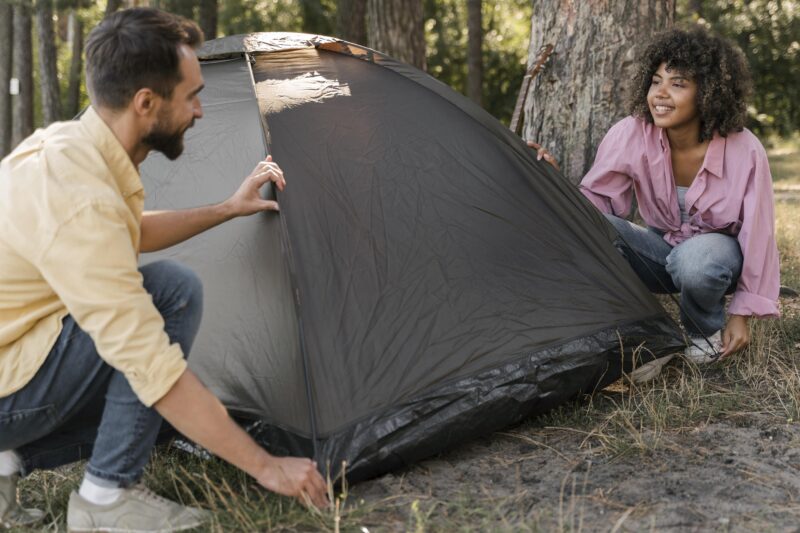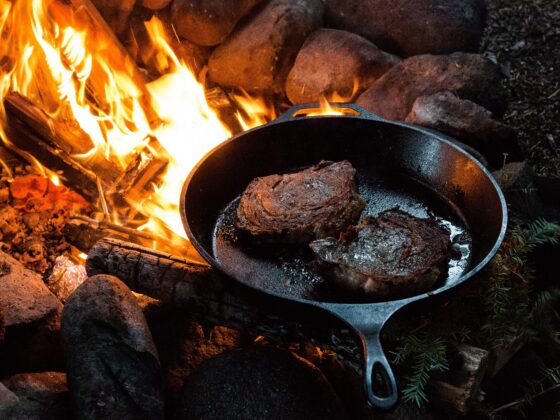When it comes to camping, one of the most important aspects to consider is the ability of your camping tent to keep you dry and comfortable, regardless of the weather conditions. A waterproof tent is essential to protect you from rain, dew, and other moisture that can seep into your sleeping area, potentially ruining your camping experience.
Not only can a wet tent be uncomfortable, but it can also pose a threat to your health. Moisture can lead to the growth of mold and mildew, which can trigger allergies and respiratory issues. Therefore, ensuring your tent is waterproof is crucial for a successful camping trip.
Understanding the different types of tent materials
Before you can effectively waterproof your tent, it’s important to understand the different types of materials used in tent construction. The most common materials include nylon, polyester, and canvas. Nylon is lightweight, durable, and has excellent water resistance. Polyester is also lightweight but offers better UV resistance than nylon. Canvas, on the other hand, is a heavier and more durable material that provides excellent waterproofing capabilities. Each material has its own advantages and disadvantages, so it’s important to choose the one that best suits your camping needs.
Preparing your tent for waterproofing
To ensure the best results when waterproofing your tent, it’s crucial to properly prepare it beforehand. Start by cleaning the tent thoroughly to remove any dirt or debris. This can be done by simply wiping the tent with a damp cloth or using a mild detergent if necessary.
Once the tent is clean, allow it to dry completely before proceeding with the waterproofing process. It’s also important to inspect the tent for any damage, such as tears or holes, and repair them before waterproofing. By taking these preparatory steps, you’ll ensure that the waterproofing treatment adheres properly to the tent material, providing optimal protection against moisture.
DIY methods for waterproofing a tent
If you’re looking for a cost-effective way to waterproof your tent, there are several DIY methods you can try. One popular method is using a silicone-based waterproofing spray. This can be applied directly to the tent fabric, creating a protective barrier against water.
Another option is to use a waterproofing solution made from a mixture of water and fabric sealant. This solution can be applied using a sponge or brush, ensuring that the entire tent is coated evenly. Additionally, you can consider applying a seam sealer to the tent’s seams, as this is a common area where water can enter. By using these DIY methods, you can effectively waterproof your tent without breaking the bank.
Using tent waterproofing products and sprays
If you prefer a more convenient and professional approach to waterproofing your tent, there are a variety of tent waterproofing products and sprays available on the market. These products are specifically designed to provide maximum waterproofing protection for tents.
They often come in spray form, making them easy to apply to the tent fabric. Simply spray the product evenly onto the tent, ensuring that all areas are covered. It’s important to follow the manufacturer’s instructions for the specific product you choose, as application methods may vary.
By utilizing these tent waterproofing products and sprays, you can ensure a thorough and effective waterproofing treatment for your tent.
Proper care and maintenance of a waterproofed tent
Once you have successfully waterproofed your tent, it’s important to properly care for and maintain it to ensure its longevity as part of your camping tent care. After each camping trip, take the time to clean your tent and remove any dirt or debris that may have accumulated.
Avoid storing the tent while it is wet, as this can lead to the growth of mold and mildew. Instead, allow the tent to dry completely before packing it away. It’s also a good idea to periodically check the waterproofing of your tent by conducting a water test. Simply spray water onto the tent and observe if any moisture seeps through. If necessary, reapply a waterproofing treatment to maintain the tent’s effectiveness.
Troubleshooting common waterproofing issues
Despite your best efforts, you may encounter some common waterproofing issues with your tent. One common issue is seam leakage, where water seeps through the seams of the tent. To address this problem, apply a seam sealer to the affected areas.
Another issue is condensation inside the tent, especially during colder weather. To reduce condensation, ensure proper ventilation by opening windows or vents.
Additionally, using a groundsheet or footprint can help prevent moisture from seeping through the floor of the tent. By troubleshooting these common waterproofing issues, you can maintain a dry and comfortable camping experience.
Essential camping gear: tent pegs and their role in waterproofing
When it comes to waterproofing your tent, don’t overlook the importance of tent pegs. Tent pegs play a crucial role in securing your tent to the ground, preventing water from pooling around the base.
Invest in high-quality tent pegs that are sturdy and durable. Consider pegs with a pointed end for easy insertion into the ground. Additionally, consider using extra pegs to reinforce the corners and sides of your tent, providing added stability and protection against wind and rain.
By using the right tent pegs and securing your tent properly, you can enhance its waterproofing capabilities and ensure a dry and secure camping experience.
Outdoor tent options with built-in waterproofing features
If you’re in the market for a new tent and prioritize waterproofing, consider outdoor tent options that come with built-in waterproofing features. Many tent manufacturers offer tents that are specifically designed to be highly waterproof.
These tents often feature waterproof materials, sealed seams, and built-in rainflies. Some even come with vestibules or awnings to provide extra protection from the elements. By investing in a tent with built-in waterproofing features, you can save time and effort in applying additional waterproofing treatments. These tents are designed to withstand various weather conditions, ensuring a dry and comfortable camping experience.
Enjoying a dry and comfortable camping experience
Waterproofing your tent is essential for a successful camping trip. By understanding the different types of tent materials and properly preparing your tent, you can effectively waterproof it. Whether you choose to utilize DIY methods or opt for tent waterproofing products and sprays, ensure that your tent is thoroughly coated to provide maximum protection against moisture. Proper care and maintenance of your waterproofed tent will ensure its longevity and effectiveness. Troubleshoot any common waterproofing issues you may encounter, and don’t forget the importance of using high-quality tent pegs. Lastly, consider outdoor tent options with built-in waterproofing features for added convenience. With a waterproof tent, you can enjoy a dry and comfortable camping experience, regardless of the weather conditions.


